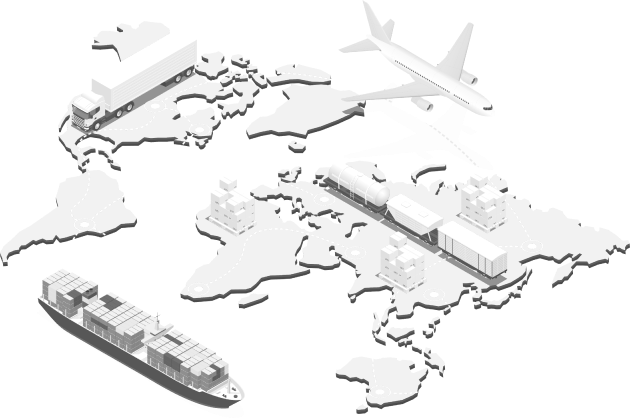While some of our clients have reported improvements in their business for 2021, others are clearly happy the year is over. So, as we begin to navigate through 2022, what’s likely ahead for clients who use “reefer containers” to transport their goods?
First, though, a bit about the terminology for those who don’t deal with this element of our shipping industry day-to-day. So, what exactly is a reefer storage container? In nautical use, a “reefer” is a person who “reefs” such as a midshipman or a commercial fisherman. But in the world of logistics, reefer storage containers are those equipped with a refrigeration device to create the proper temperature, humidity, and atmosphere for perishable goods.
Reefer storage containers can safely transport fresh fish, seafood, meat, vegetables, dairy products, frozen food, flowers, pharmaceuticals, and other perishables. They’re placed on reefer cargo ships, which continue the goods’ comfortable, temperature-controlled journey across oceans and between continents.
Trends in 2022 and Beyond
So, examining that “reefer storage container marketplace,” here are trends that Prime Logistics sees for 2022 and beyond:
Certainly, the market is growing. In 2019, the reefer container market was estimated at 3,169.2 thousand TEUs and by 2030, it’s projected to be 7063.3 thousand TEUs, according to a Prescient Strategic Intelligence report. A TEU is a 20-foot equivalent unit of cargo capacity for container ships. Each TEU is based on one 20-foot-long intermodal container.
Given the 2020-2021 shortages of reefer shipping containers, it’s also good news that shipping container manufacturers in the U.S., Europe, China, Taiwan, and elsewhere are now producing more new reefer containers than pre-pandemic. That’s helped reduce the length of shipping backlogs and improve availability in some regions.
The Perfect Storm
That said, the reality early in 2022 is that reefer containers are still scarce in many spots. So, continuing shipping delays are likely in 2022, particularly from certain regions. “People often ask us why the increased production of new reefer containers isn’t doing the trick to balance supply and demand,” notes Yulieth Onofre, Prime Logistics Group Sales Manager based in Miami. “Well, it’s a combination of factors that have created ‘the perfect storm.’”
For example, businesses stung by delays in shipping the past two years due to container shortages have increased their orders in a big way. “Many of our clients are shipping many more goods than in the past as they work to rebuild their inventories,” she emphasizes. Clients fearful of shipping delays are also ordering on a longer lead-time.
While Prime Logistics saw evidence late last summer that supply and demand were inching closer together, then the rise and spread of the Delta and Omicron variants of the COVID-19 virus reversed that dynamic. During this pandemic era, increased pharmaceutical transport of biologics, vaccines, cellular therapies, and blood products – all requiring temperature-controlled containers – is increasing.
Early in 2022, reefer cargo ships, both large and small, are fully utilized and in short supply in some regions. Separately, some vessels previously designated for reefer container business have been shifted by their owners to carry dry cargo instead.
Most notably, though, is that pandemic-weary consumers are in a “buy, buy, buy” mode.” Many retail establishments have reopened, and e-commerce is strong. Consumers are ordering “at will” on a day-to-day basis to reward themselves, often from the comfort of their living rooms. Product import levels, as a result, are record setting.
After more than a year of those record imports, month after month, the system is stressed to the max. “We’ve seen delays in port terminal access, ship schedules, rail services, truck transport, and also a shortage of equipment availability,” says Onofre. New ocean trade routes are also putting a strain on ocean reefer container ship availability.
“Yet, despite those supply chain issues beyond our control, our Prime Logistics team works around the clock to assist our clients,” she points out. “We’re creative and solution-focused, and while we obviously can’t ‘fix’ the world’s supply chain issues, we’re committed to ensuring that our clients know all their options and keeping them informed.”
Demand is Off the Chart
Unfortunately, the cost of transporting goods continues to zoom higher as imports reach record levels and demand is “off the chart.” Thus, reefer container operators continue to raise prices for transport. In the December 2021 edition of “Drewry’s Container Forecaster” report, Drewry Maritime Financial Research (DMFR) projected higher freight rates in 2022 for businesses using reefer containers.
Trend-wise, Prime Logistics is seeing a bit less price inflation (although it’s still happening, for sure) on North-South trade routes for ocean transport of reefer containers; that’s particularly the case for export transport from some regions of South America and Central America. In contrast, East-West routes such as those between the U.S. and Asia are increasingly experiencing a bit higher price inflation.
Globally, Asia-Pacific (APAC) accounts for the largest share in the global reefer container market, and that’s expected to continue, according to a recent Prescient Strategic Intelligence report. But with rapid urbanization, Latin America (LATAM) is expected to post the highest growth rate in the market moving forward. Look for the most growth in the 40-foot reefer container category.
Supply Chain Challenges
Between 2020-2030, Prescient also projects global reefer container market growth at 8 percent. But can customers expect those pesky supply chain issues to disappear? Previously, Drewry had projected that ongoing supply-chain issues within the reefer container marketplace would begin easing by mid-2022. Now, it’s adjusted that projection to sometime in 2023.
“While we’re hoping that conditions will improve as the year progresses, this year is still likely to deliver many challenges for businesses,” acknowledges Onofre. “Definitely, give us a call if we can assist your business. We’re a solid, proactive asset to have on your side. We’ll assure you’re doing all possible to navigate successfully through the volatile reefer shipping marketplace in 2022.”
About Prime Logistics
One of four divisions of Prime Group, an international logistics services conglomerate founded in Ecuador in 2001, Prime Logistics serves to streamline, optimize, and expedite freight to and from the U.S. for a wide range of major industries.
With offices in Miami, New York, Los Angeles, Bogota, Quito, and Amsterdam, Prime Logistics capitalizes on its long-time relationships with the major air carriers and ocean lines to offer competitive rates in securing ample space to destinations all around the world.
For information, call 305-592-2044 or visit www.primelogisticsgroup.com.


